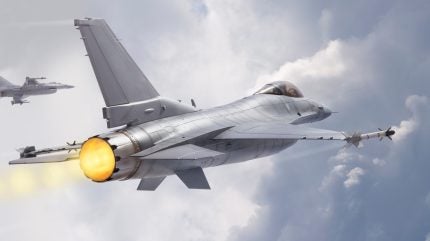
The Philippines recent $5.6bn F-16 deal with the US is poised to bolster the country’s capacity for air defence, contributing to regional stability and fostering synergy with allied military operations in the Indo-Pacific region, according to insights from GlobalData, a prominent data analytics firm.
Early in April 2025, the US government sanctioned the potential sale of 20 F-16 fighter jets to the Southeast Asian country.
This planned acquisition is in line with the Philippines’ strategic initiative to reinforce its defence relationship with the US.
In the analysis titled “The Global Military Fixed-Wing Aircraft Market 2025-2035,” GlobalData forecasts that over the next decade, the Philippines is set to invest around $5.1bn in aircraft procurement. Combat aircraft are expected to account for 79% of this expenditure.
GlobalData Aerospace & Defense Analyst Udayini Aakunoor said: “Amid the growing geopolitical tensions in the South China Sea, F-16s are expected to serve as a deterrent against potential security threats while reinforcing the country’s territorial defence.
“The advanced air-to-air and air-to-ground capabilities of the combat-proven F-16 aircraft will allow the Philippine Air Force to conduct more effective patrols, intercept potential threats, and respond to any incursions into its airspace.”
The two nations share a history of military collaboration, which has been further solidified by agreements such as the Enhanced Defense Cooperation Agreement (EDCA) and through regular joint military drills.
With the F-16’s ability to integrate with US and Nato-standard armaments and participate in cooperative exercises like Balikatan, the Philippines is positioned to effectively collaborate with allied forces during times of regional security tensions.
She added: “With the F-16 acquisition, the Philippines is poised to make significant strides in modernising its air force under the long-term Horizon 3 military modernisation programme, equipping the aircraft fleet with the necessary capabilities such as advanced avionics and precision-guided munitions to address current and future security challenges in the Indo-Pacific region.
“This development underscores the country’s commitment to strengthening its military readiness and strategic partnerships in an increasingly contested geopolitical landscape in the region.”



